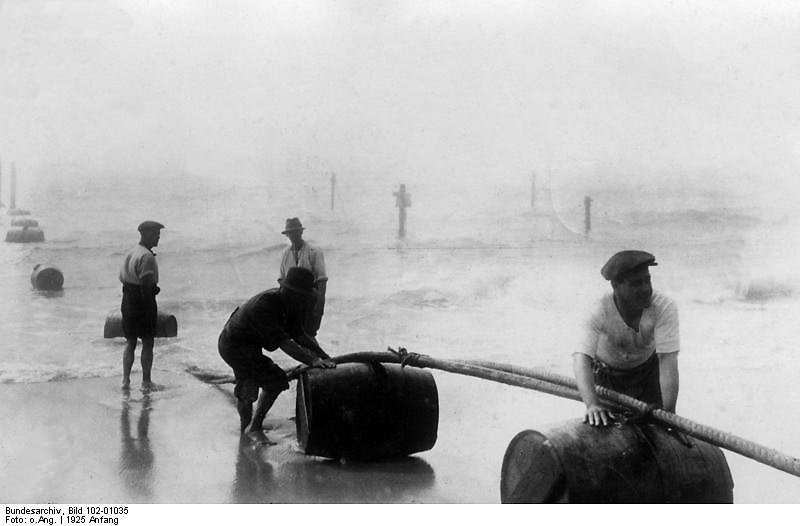
Originally published on 22 October 2024.
Deployments of ships and aircraft to challenge China’s illegal claims in the South China Sea are increasing. European ships are appearing more often, while Asia-Pacific countries are increasingly conducting activities in areas that China regards as sensitive.
Several nations have claims in the South China Sea, but China’s claim is the most extensive and controversial. Beijing seeks to enforce sovereign rights and jurisdiction over all features within the nine-dash line, including the islands, rocks and atolls that make up the Paracel and Spratly Islands. China claims this territory despite a 2016 ruling that found that China’s claims had no basis in international law.
With international law doing little to curb China’s ambitions, more countries are using their militaries to challenge China’s claims. In 2024, more European navies operated in the South China Sea than previously in recent years, with Britain, France, Germany, Italy and the Netherlands all sending ships to the region. Meanwhile regional counties, such as Japan, Canada, New Zealand and Australia, stepped up their engagement, including via joint sailings with the Philippines in the South China Sea.
Different countries take different approaches to challenging China’s illegal claims in the South China Sea. Some militaries are operating within the nine-dash line. Others sail naval ships directly through the Spratly Islands. Some advertise their activities; others do not.
Only a few have conducted activities close to the Paracels, because doing so is unusually risky. A 2022 incident in which a Chinese pilot dumped chaff in front of an Australian P-8 Poseidon surveillance aircraft is an example of the risk.
The US is the only country to send aircraft or ships within 12 nautical miles of claimed features. By doing so, it would be entering territorial waters if China did in fact own the territory.
These military activities to challenge China’s claims have occurred since 2015:
|
Country
|
Military activities in the SCS
|
Challenges Spratly claims
|
Challenges Paracel claims
|
Challenges within 12nm
|
Publicises challenges
|
USA
|
✓
|
✓ |
✓ |
✓ |
✓
|
Canada
|
✓
|
✓ |
|
|
✓
|
Australia
|
✓
|
✓* |
✓* |
|
|
NZ
|
✓
|
✓* |
|
|
|
Japan
|
✓
|
✓* |
|
|
|
UK
|
✓
|
✓ |
✓ |
|
✓
|
France
|
✓
|
✓ |
✓ |
|
✓
|
Germany
|
✓
|
|
|
|
|
Netherlands
|
✓
|
|
|
|
|
Italy
|
✓
|
|
|
|
|
*Challenges are likely but cannot be confirmed
Apart from countries around the South China Sea, which must routinely operate on or over it, the US has by far the most public and active military presence. In 2023, the US military conducted 107 activities, including six specific operations to challenge China’s illegal claims under the US Freedom of Navigation program. US activities are always accompanied by strong public statements.
France and Canada are both active in the region, including within the Spratlys. Both advertise their military presence and actions. Canada now carries journalists on some South China Sea transits. It has operated close to the Paracel Islands, but, as demonstrated when a Chinese fighter fired flares near a Canadian helicopter in 2023, doing so comes with risks. In 2015, France boldly exercised its right to freedom of navigation by sailing a task force through the Paracels.
Australia has an active military presence in the South China Sea. There’s evidence that Australia operates close to China’s illegal claims. However, the tempo and nature of its military challenges are hard to determine, because Canberra does not advertise them. China’s military has been aggressive in seeking to deter Australia from operating near the two island groups by engaging in unsafe intercepts.
New Zealand has a semi-regular presence inside the nine-dash line, commensurate with the size of its armed forces. Meanwhile, Japan has a growing military presence in the region and is increasingly working with partners, such as the US, Australia and the Philippines. As with Australia, there are signs that Japan and New Zealand operate close to, or within, the Spratly group, but neither publicise specific actions, so the nature of them is hard to determine.
Britain sent a carrier strike group through the South China Sea in 2021 and intends to do so again next year. The British military operates close to the Spratly and Paracel Islands and uses public messaging to reinforce the importance of sailing in these areas.
Signalling growing European interest in the region, Germany, the Netherlands and Italy sent navy ships to the area in 2024. But none seems to have overtly challenged China’s claims within the Spratlys or Paracels.
The most notable regional absentee is South Korea. In 2018, a South Korean destroyer, Munmu the Great, took refuge from a typhoon in the Paracel Islands. But Seoul quickly clarified that the ship was not there to challenge China’s claims. Likewise, when the littoral states of South East Asia routinely operate there, they do not directly challenge China’s claims via freedom of navigation transits.
The growing presence of European navies in the South China Sea and stepped-up activity of Asia-Pacific countries there is welcome. It’s helping to push back on China’s growing aggression and reinforce longstanding rules and norms that underpin regional prosperity.




